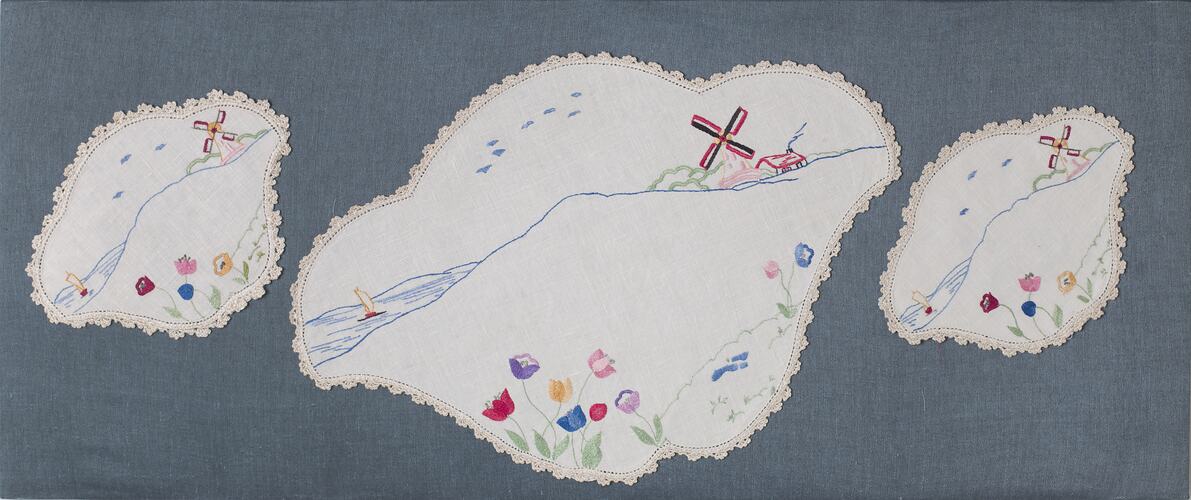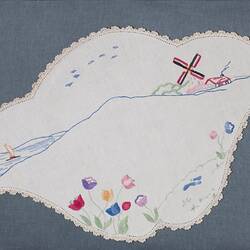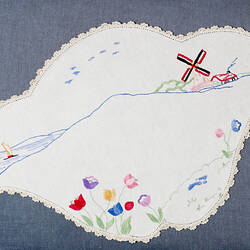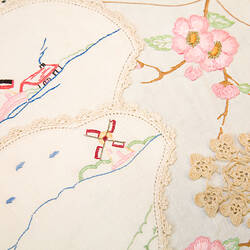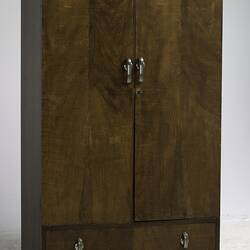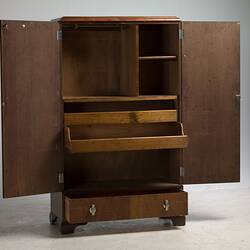Summary
Bedroom vanity set or dressing table set, made by Kath Davis for her glory box in the late 1930s, and used in married life.
Kath Davis began collecting items for her glory box when she started work at 17, living with her parents in Traralgon, and had competed her collection by around 1940.
Physical Description
Three piece linen set (one large, two small) with embroidered Dutch motifs (tulips, windmills) in various colours and scalloped, crocheted edging
Significance
Glory boxes represented a significant rite of passage for many women growing up before, during and after World War Two. They provide a material symbol through which can be explored themes of artistry, sexuality, economy and cultural maintenance. Of particular interest is how glory boxes can be used to track the growing consumer culture after World War Two and how there was a shift from the hand made to the mass produced. The traditions cross time and cultures.
Kath Davis's box is significant for the strength of its documented story, and for its completeness in terms of survival of both the box and its collection.
More Information
-
Collecting Areas
-
Acquisition Information
Donation from Ms Kath Davis, 18 Feb 2005
-
Maker
Ms Kath Davis, Traralgon, Latrobe Valley, Gippsland, Victoria, Australia, circa 1938
-
User
Ms Kath Davis, 109 Victoria Road, Chirnside Park, Greater Melbourne, Victoria, Australia, circa 1940s-1990s
-
Classification
-
Category
-
Discipline
-
Type of item
-
References
Oral history interview, 2003 (disc and abbreviated transcript); references in 'The Glory Box: Origins, Symbols and Experiences', 1996 (masters thesis) and in 'The Glory Box: Marriage, Migration and Material Culture in Australia, 1930-1960' (phd thesis in progress) - all produced by Moya McFadzean
-
Keywords
